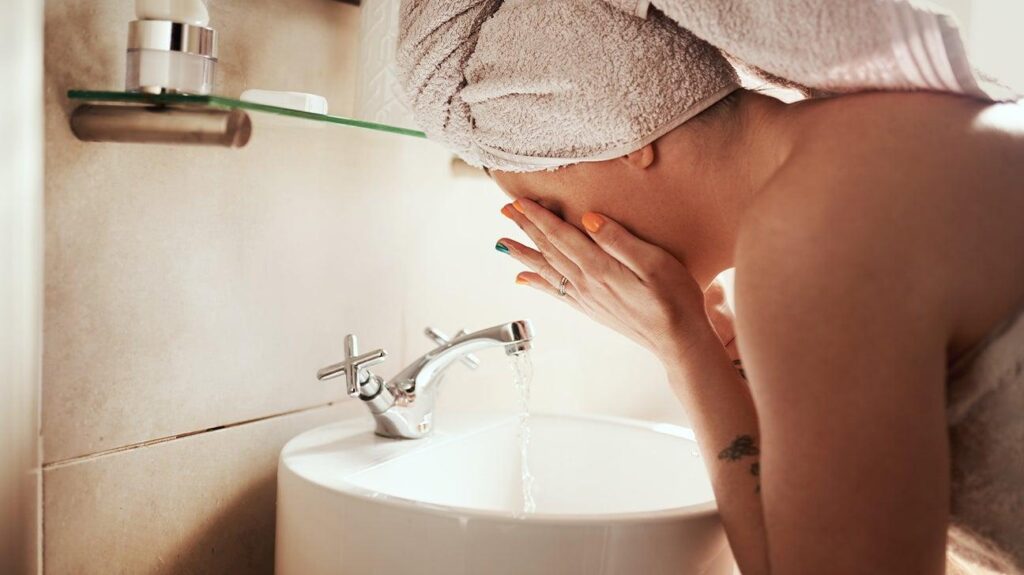Table of Contents
- Immediate Response Protocols for Chemical Exposure
- Understanding the Importance of Cool Water in Decontamination
- Step-by-Step Guide to Effective Skin and Eye Rinsing
- Recommendations for Preventing Long-Term Damage After Exposure
- In Retrospect
Immediate Response Protocols for Chemical Exposure
When a chemical substance makes contact with the skin or eyes, every second counts. Immediate and thorough flushing with cool water significantly reduces tissue damage and prevents the absorption of harmful agents. Begin rinsing the affected area without delay, using a gentle but continuous stream of water for a minimum of 15 minutes. During this process, it is critical to remove any contaminated clothing or accessories to prevent further exposure.
Follow these essential steps to effectively manage initial chemical exposure:
- Use cool, not cold, water to avoid additional irritation or shock to the skin and eyes.
- Keep the affected eye open wide if possible, ensuring water fully flushes out chemicals.
- Avoid using any neutralizing agents or creams unless specifically instructed by medical personnel.
- Seek immediate medical evaluation following initial rinsing, even if symptoms appear mild.
Understanding the Importance of Cool Water in Decontamination
Cool water plays a crucial role in decontamination by rapidly reducing the temperature of affected skin and eyes, which helps to minimize chemical burns and tissue damage. When hazardous substances come into contact with the body, immediate rinsing with cool water can dilute and wash away contaminants, preventing further absorption and lowering the risk of severe injury. Its calming effect also helps alleviate pain and inflammation, providing essential first aid before medical professionals intervene.
Effective rinsing with cool water should be a priority in any emergency involving chemical exposure. Key points to consider include:
- Duration: Continue flushing the area for at least 15-20 minutes to ensure thorough removal of contaminants.
- Temperature: Use water that is cool but not ice-cold to avoid causing additional skin trauma.
- Accessibility: Make sure water sources are readily available in workplaces or environments where hazardous materials are handled.
- Immediate Response: Begin rinsing instantly upon exposure to maximize protective benefits.
Step-by-Step Guide to Effective Skin and Eye Rinsing
Begin by positioning yourself in a safe and accessible area with a nearby water source. For skin exposure, gently flush the affected area under a steady stream of cool, clean water-tap or bottled-for a minimum of 15 minutes. Avoid using hot or cold water to prevent further irritation. While rinsing, carefully avoid scrubbing or applying any soaps or chemicals that may exacerbate the injury. For eye exposure, keep your eyelids open using your fingers and continuously rinse with a gentle but steady stream of water or sterile saline solution, ensuring that water flows from the inner corner of the eye outward.
During this process, remain calm and take care to prevent water from contaminating other parts of the face or body. Use a cup or clean container if a running water source is not available. Remember to avoid rubbing or touching the eyes as this can cause additional damage. Once rinsing is complete, securely cover the affected area with a clean, non-adhesive dressing and seek immediate professional medical assistance to assess the severity of the exposure and receive appropriate treatment.
- Always use cool, running water-not stagnant or reused water.
- Maintain rinsing for at least 15 minutes to thoroughly dilute hazardous substances.
- Prevent cross-contamination by isolating the water flow to the affected area only.
- Avoid using other chemicals or wipes before professional guidance.
Recommendations for Preventing Long-Term Damage After Exposure
After an incident involving chemical exposure, it is critical to continue monitoring the affected areas even after thoroughly rinsing with cool water. Persistent irritation, burning sensations, or discoloration should be addressed promptly by seeking professional medical evaluation. Early intervention not only mitigates discomfort but also significantly reduces the risk of permanent tissue damage. Avoid applying creams, oils, or other substances unless directed by a healthcare provider, as these can potentially exacerbate the injury.
Key steps for safeguarding your skin and eyes post-exposure include:
- Maintain gentle cleansing routines to prevent infection.
- Protect exposed areas from prolonged sun exposure using protective clothing or sunscreen once irritation subsides.
- Keep affected skin hydrated with dermatologist-approved moisturizers.
- Wear protective eyewear if sensitivity or dryness persists.
In Retrospect
In conclusion, prompt and appropriate response to chemical or irritant exposure is critical to minimizing harm. Rinsing affected skin and eyes immediately with cool water can significantly reduce injury severity and improve outcomes. Individuals and workplaces alike should prioritize education and readiness to ensure swift action when accidents occur. Staying informed and prepared can make all the difference in safeguarding health and preventing lasting damage.Check Our Other Blogs
- StunGun – Your Trusted Source for Stun Guns, Laws, and Self-Defense Tips
- PepperSprayLaws – Your Trusted Resource for Pepper Spray Information
- StunGunLaws – Your Trusted Guide to Stun Gun Legality and Safety




